Tomoaki Nakano produces Echizen lacquerware, a traditional craft of the region, in the Kawada area of Sabae, Fukui Prefecture. Echizen lacquerware boasts an overwhelming share in the field of commercial lacquerware used in hotels and restaurants, and many people have probably picked up Echizen lacquerware on their travels or when dining out. Echizen lacquerware, which excels in mass production, has been elevated to the level of a work of art and is thoroughly hand-painted, even if the number of pieces is limited. He has chosen to live his life as an artist by creating high value-added lacquerware rather than mass-produced products.
Lacquerware for modern life in Fukui Prefecture.
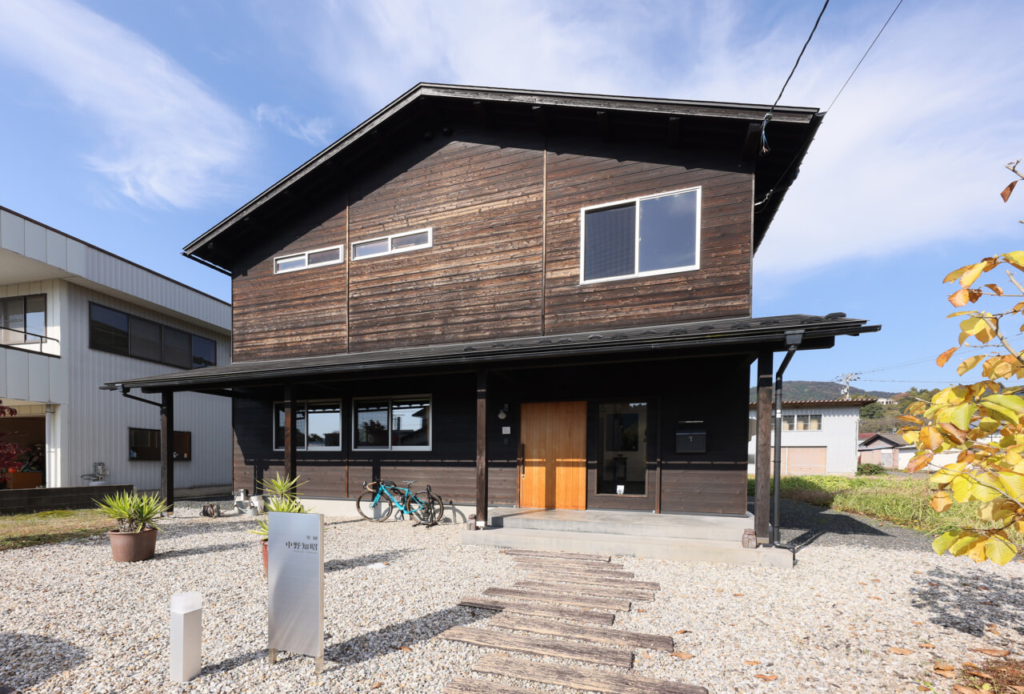
Nakano’s workshop is located close to Prefectural Road 18, known as Urushi-no-Sato Dori. The name of this street comes from the fact that the Urushi-no-Sato Kaikan (Urushi no Sato Kaikan) is located along the street, where visitors can try their hand at painting lacquerware, and many lacquerware workshops and craftsmen’s houses have stood in the vicinity for centuries.
Involved in all aspects of lacquerware production
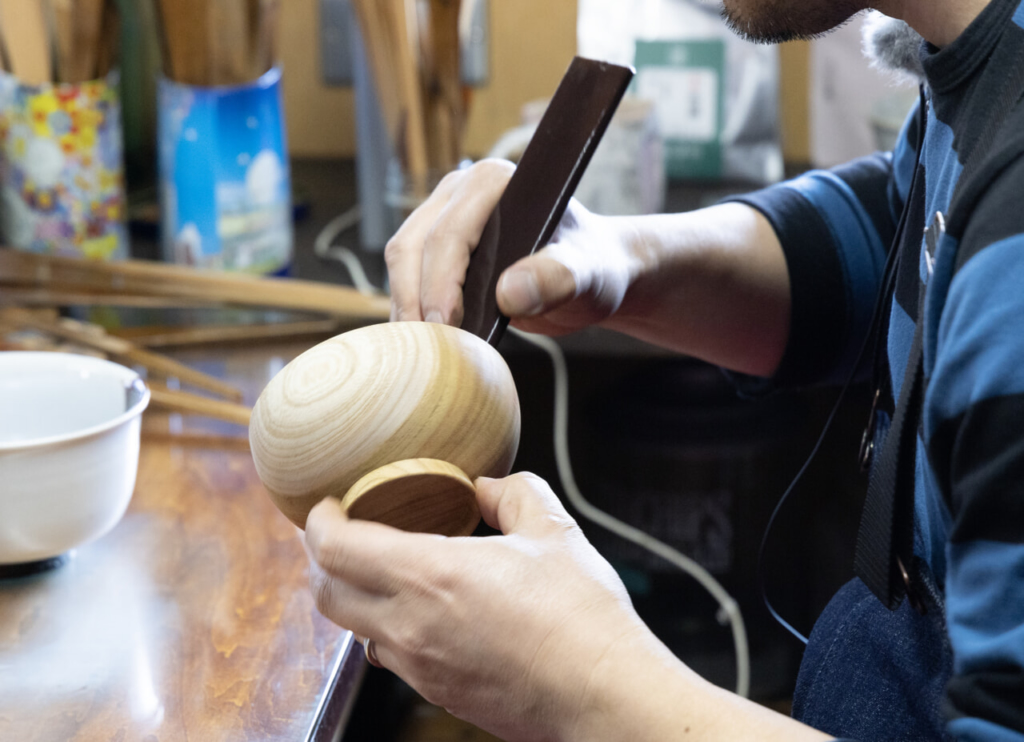
Lacquerware production can be broadly divided into processes such as ‘woodworking’, ‘undercoating’ and ‘middle and top coating’, with the division of labour generally divided between different craftspeople undertaking each process. However, Mr Nakano draws up his own designs and orders the woodworkers to do everything himself, from the basecoat to the finishing topcoat. It takes as long as a year from the time he orders the wood until the finished lacquerware is shipped. While each craftsman specialises in his own work according to the orders of his customers, Nakano is one of those rare individuals who consistently creates his own works of art with his own hands.
Attracts attention from galleries across the country.
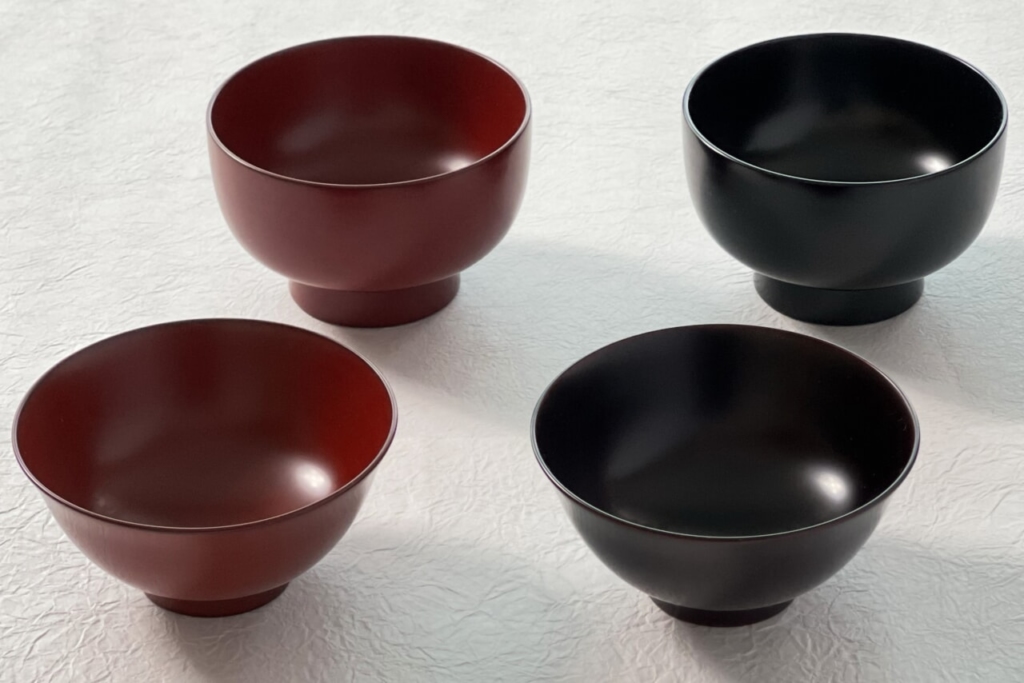
Nakano’s work is simple but beautiful with the elegance of lacquer. His reputation has spread throughout Japan and he holds more than 10 exhibitions a year. Nakano is now an up-and-coming lacquerware artist who is attracting keen attention from galleries and other institutions across the country.
Enchanting with the beauty of the finish.
Among the lacquerware produced by Ms Nakano, bowls without ornate decorations are particularly popular. The bowls are favoured by consumers with modern sensibilities for their design, which makes them easy to use not only at weddings, funerals and other ceremonial occasions, but also in everyday dining, and for their beautiful form and warmth of texture. The unique texture is created by a finish called ‘Shin-nuri’. Shin-nuri requires a highly skilled lacquering technique, as the top coat is not polished at the end and is finished as it is. Mr Nakano has been polishing his lacquering skills for 27 years in the same area, where craftsmen are generally highly skilled in top-coating, to the extent that Echizen lacquerware is said to be good at top-coating.
The lacquer for the top coat is also handmade.
Lacquer for the top coat is used for the top coat of lacquerware. The process of making top-coating lacquer is called tekurome, and used to be common in production areas. However, handmade ‘Kami-nuri lacquer’ is time-consuming and labour-intensive, requiring four to five years of storage. However, Mr Nakano believes that “handmade work is what increases the value of lacquerware”, and since 2004, he has been exposing raw lacquer to sunlight once a year to evaporate the water and make the lacquer for the top coat. The process is called teguro-me (hand-glazed lacquer).
To live as a writer.
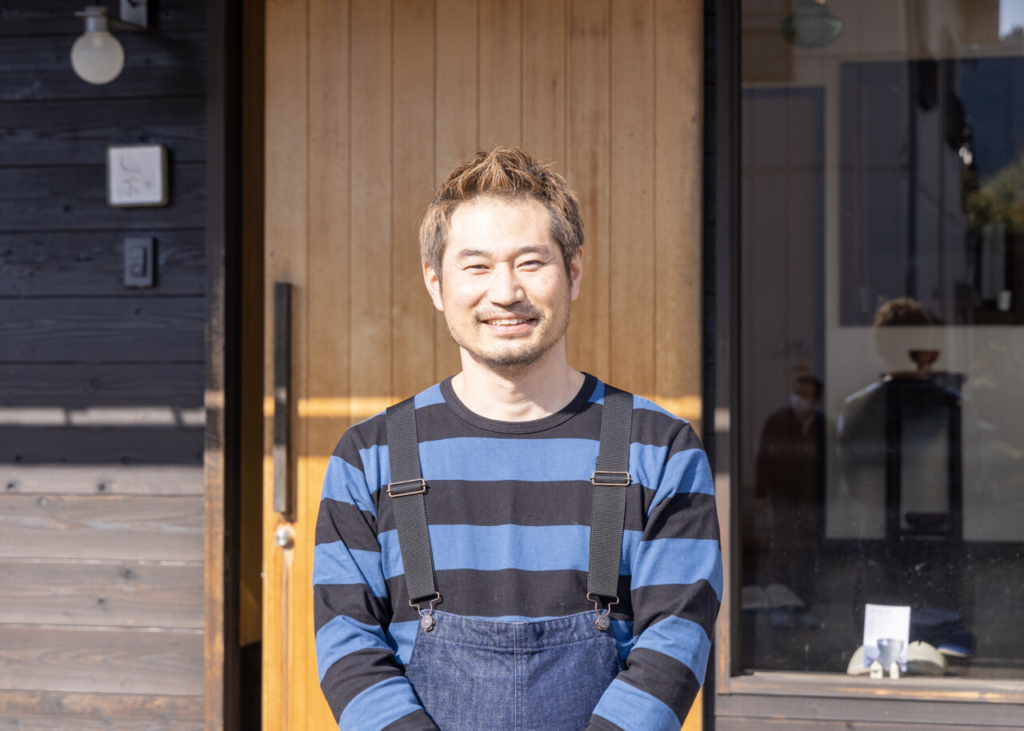
Born and raised in Sabae City, Nakano graduated from a technical college and worked as a civil engineering designer, but when his father, a top-lacquer painter for Echizen lacquerware and a contractor for the production area, fell ill, he took the opportunity to help his father with his work. Fortunately, my father later recovered from his illness and I was able to learn the art of lacquering from him.
That foundation is still alive today, he says. ‘Thanks to him, I was very busy at work at the time, and I got to paint all sorts of things. In this region, there are two types of overglaze painters: round painters, who paint round objects, and square painters, who paint square objects. My father’s workshop specialised in round objects, but he also handled square objects, so I acquired a wide range of skills in both areas.
Discomfort felt in the work of production
While training in his father’s workshop, Nakano began to have doubts about the work of applying lacquer to resin vessels or applying a topcoat to a surface that had been primed with chemical paint. He says: “Some lacquerware is sprayed with a spray gun, but I wanted to stick to the beautiful finish that can only be achieved by hand-painting.” In parallel with her work, Ms Nakano began creating her own artworks. When she entered her work in competitions, she won a succession of prestigious awards, including the Grand Prize at the Sake Vessel Exhibition, the Excellence Prize at the Bowl One Grand Prize and the Fukui Prefecture Governor’s Prize at the Echizen Lacquer Ware Exhibition. It was clear to all that his talent as an artist was blossoming.
Writers whom he admires
In addition to his father, there was another person who had a great influence on Mr Nakano. Like Mr Nakano, he was a lacquerware artist based in Fukui, Hideaki Yamamoto. Mr Yamamoto is credited with popularising the term “lacquerware for everyday use”, which is now often heard of. Mr Nakano was strongly attracted to Mr Yamamoto’s style, which involves applying a solid base coat to a wooden base of his own design and finishing it with plain bowls and stacked boxes. Seeing Mr Yamamoto making ‘tegurome lacquer’, Mr Nakano started making it as well. Mr Yamamoto has already passed away, but the spirit of his workmanship is still deeply engraved in Mr Nakano’s heart.
Increase your network of contacts through sales and exhibitions.
After Yamamoto’s death, Ms Nakano chose to follow in his footsteps and enjoy her own work as an artist. At the time, she gathered information on popular galleries from women’s magazines such as Katei Gaho and Fujin Gaho, packed her works into a large rucksack and went on sales trips to those galleries. Perhaps as a result of these efforts, she exhibited at Craft Fair Matsumoto, the largest arts and crafts exhibition in Japan, held in Matsumoto City, Nagano Prefecture. He expanded his connections with the pottery shops and galleries that gather there.
Set up own workshop and become independent
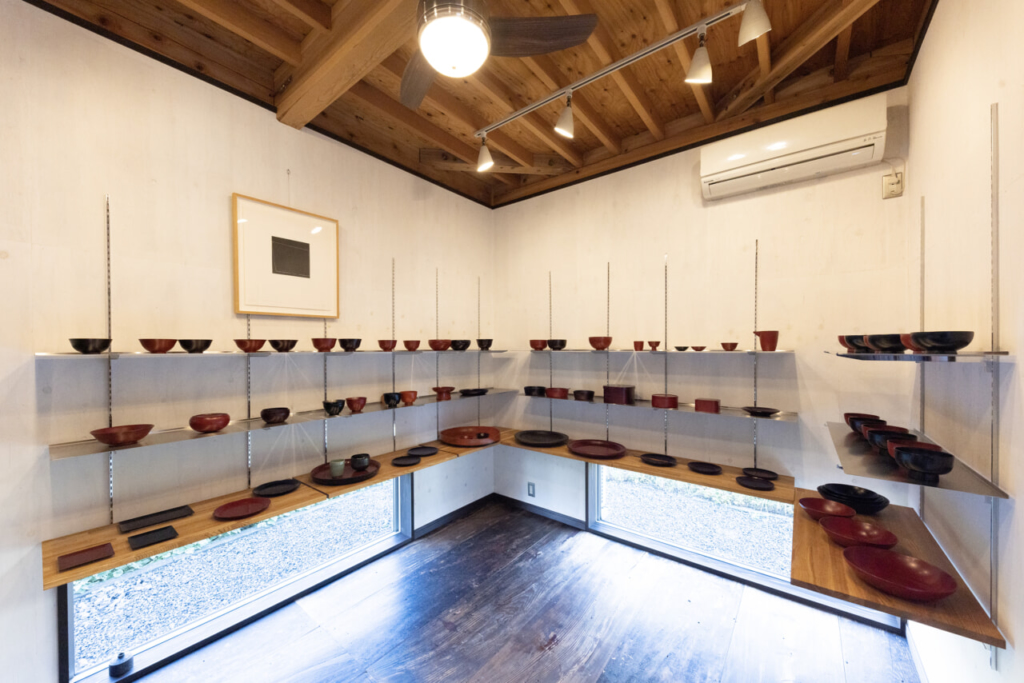
As she continued to make sales rounds and exhibit at events, she gradually received more invitations from galleries to participate in solo and group exhibitions, and she began to see prospects for making a living as an artist. So in 2014, he set up his own workshop with a small exhibition room at his current location. His brother took over his father’s work.
Nakano’s solo and group exhibitions increased in frequency as the years went by, and by 2019 he was holding 10 exhibitions a year. Currently, he prepares between two and three hundred pieces of lacquerware for a single exhibition.
Great support from partners
Ms Nakano always presents one or two new works in conjunction with her solo exhibitions. He tries to be present at the gallery as much as possible during the exhibition period so that he can talk directly to visitors about the appeal of his work, thereby increasing his fan base. Recently, in response to requests from galleries, he has also produced oval plates and spoons, which are rare in lacquerware. His wife, Yanagiko, provides support in the preparation and administrative work for his solo and group exhibitions, which is a great help to his creative activities.
Just keep making good things
Nakano says, “I want to keep making good lacquerware because the quality of the first piece of lacquerware a person encounters determines whether or not he or she will use it for a long time.
At his solo exhibitions, he also repaints lacquerware that has been purchased in the past if visitors bring it in. Nakano says that it gives her the greatest pleasure to see carefully used lacquerware returned to her. He says: “If you wipe lacquerware properly every time you wash it, it comes out beautifully shiny. Seeing this is what makes me happiest. I feel that the lacquerware has grown beautifully after being used every day,” she says.
The lacquerware that Nakano pours his heart and soul into reflects the life of the person who uses it, giving it a unique character. In time, the lacquerware becomes an indispensable part of the user’s life and enriches their dining table and, by extension, their life as well.



